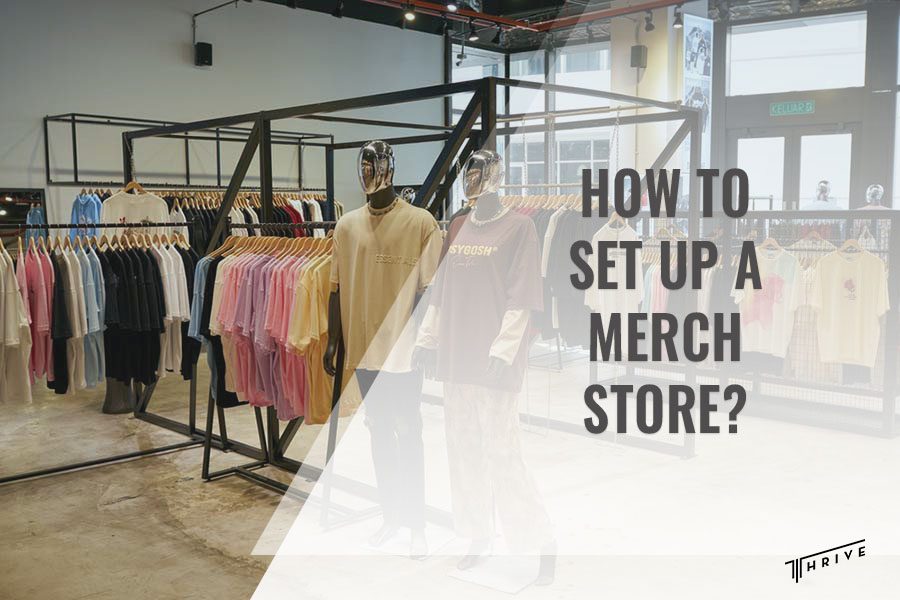
Merchandising is a popular practice used by many, from celebrities to social media influencers. It is a promising method for generating revenue and improving recognition among the target audience. But to reap the benefits, you first need to learn how to set up a merch store.
The process involves several steps, which are all related to one another. For successful merch, it is recommended to get familiar with all of them. Let’s explain how to start a merch store and equip you with knowledge to expand your brand.
How to Set up Merch Store: Key Steps Overview
Firstly, let us briefly introduce you to the concept by answering what is a merch store. A merchandise store, or merch store, can be either an online or physical shop that sells branded products. In a merch store, the products are offered by a well-known company or an individual.
So how can you open a merchandise store?
The steps on how to set up a custom merch shop are generally the same no matter the brand industry. To create one and increase your chances of successfully launching and running it, you should follow these steps:
- Define your target audience
- Find your brand voice and style
- Create your business plan
- Choose product line
- Design your merchandise
- Explore printing and production options
- Register your business
- Set up an online store, optimize it, and go live
- Market your business
- Selling, updating inventory, and making deals
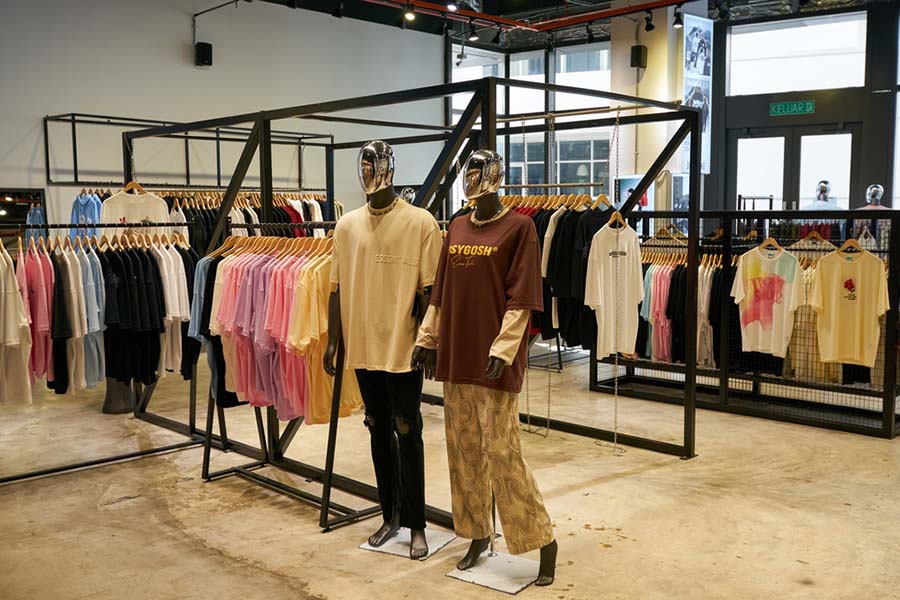
1. Defining target audience
The first step on how to set up a merch shop, and probably one of the crucial ones, is defining the audience you will target. Never rush, or skip this step because the merch competition in every niche is highly competitive, and a clearly defined buyer persona will put you on the right track.
To define your audience, you will have to do in-depth research. Start by identifying the demographics and dig deeper into their behavior. Try to understand their purchasing habits.
Knowing the needs and preferences of your target audience offers many benefits. First of all, you will minimize the competition and make it easier for you to stand out. In addition, it will allow you to tailor your merchandise according to the demand-supply dynamics.
Once you have a narrow target audience, it will be easier to decide what merch items to include, what designs to use, and how to increase your customer satisfaction.
Ultimately, when you combine everything mentioned above with the right marketing strategies, you might achieve high profitability.
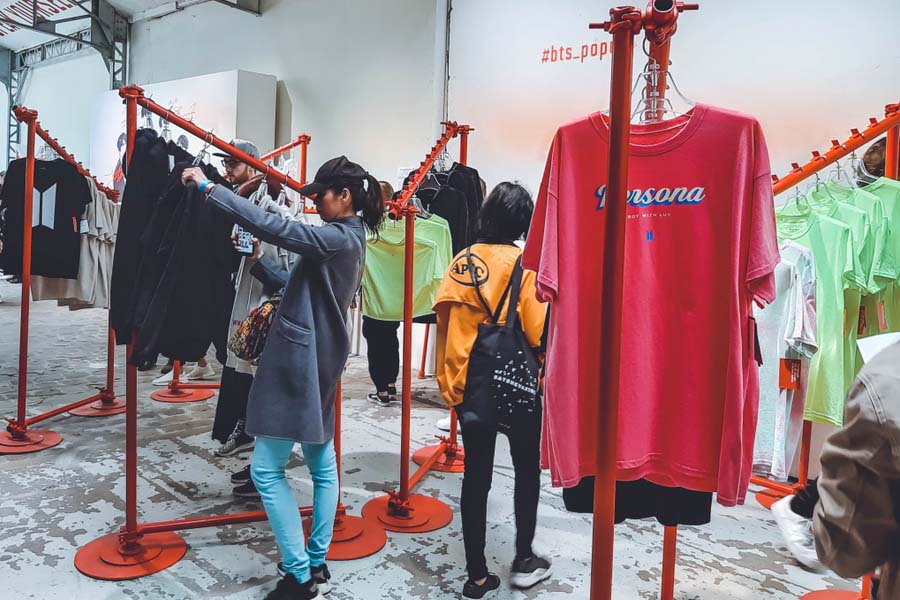
2. Finding brand voice and style
The distinct brand you will create for your online store will be a reflection of your identity and values. Since the merch industry is a little bit overcrowded, your brand voice and style will be your recognition marks.
Most importantly, when you have a clearly defined brand style, you can create a cohesive merch product line and designs that resonate with your audience. The basics you should focus on are brand colors, logo, font, and artwork.
3. Creating business plan
One of the many mistakes merch shop owners make is not writing a business plan before they open their store. The business plan is the foundation of every business. As they say, a merch store can’t succeed without a comprehensive business plan.
Having a mission and vision is compulsory. Furthermore, the business plan should outline your objectives, products, marketing strategy, SWOT table, business structure, financial plans and projections, and competitor analysis.
In addition, a business plan is a critical tool if you need to secure online merch funding. A well-crafted plan that outlines your objectives and strategies for achieving them can attract investors and lenders.
4. Choosing product line
The product line will be the bloodline of your merch. One of the best-selling lines includes merch clothing. You can sell everything from T-shirts and hoodies to socks, hats, and tote bags. If you want to go beyond clothing, you might also include water bottles, posters, glasses, keychains, backpacks, phone cases, and similar accessories.
To pick the best merch items, you should research the product viability. For best results, you should research the demand for specific products and calculate the potential profit margins. Your decision should be based on growth potential and future expansion plans.
Whatever the product you choose to sell for your merch, you should never compromise on quality. All products must be high-quality yet affordable.
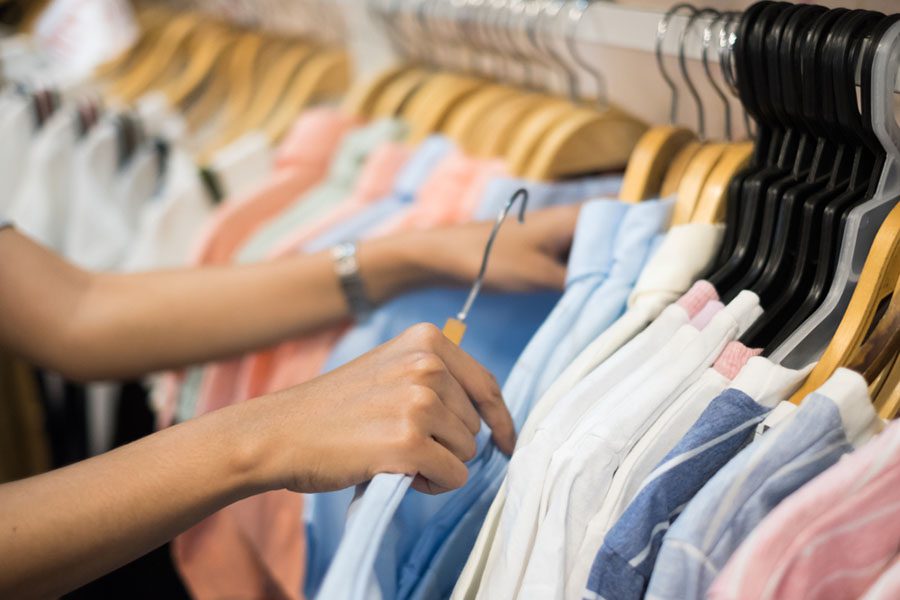
5. Designing the merchandise
Once you have the product line prepared, it will be time to start creating designs. The design should resonate with your brand and be tailored to consumer preferences. It should also keep up with industry trends and popular designs among competitors.
If you are not a designer yourself, it’s best to hire a professional. They can share their perspective and expertise. A designer might also propose various design options that align with your brand image.
6. Exploring printing and production options
If you are thinking about opening an online merch store, you need to collaborate with a reliable company. For instance, if you plan to sell clothes, your next priority would be finding a custom merchandise printing company. At Thrive Screen Printing, we offer all-in-one screen printing services, from art assistance for your designs to high-quality printing and dropship fulfillment.
Compared to the competition, we offer various benefits such as:
- Screen prints with high-quality and vibrant colors
- Wide range of apparel pieces we can print on
- Fast turnaround times for high print demand, capable of printing up to 20,000 prints per eight hours
- Constant support and friendly employees available to answer all of your questions
- Environment-friendly printing options, such as non-phthalate and non-PVC ink; we work in an eco-friendly workplace and minimize our waste by recycling
7. Registering business
You need to register your online merch store as a business to sell your merchandise legally and process payments. The regulations and rules vary from country to country.
As a rule of thumb, you will require an employer identification number. Consult with a professional for this step because they will advise you on the type of company you should register according to your individual situation and liability preferences. As a reference, most merch stores are registered as limited liability companies for personal assets protection.
Online merch stores in some countries also need to be licensed. Two key licenses are the business operating license and the doing business as (DBA) license.
8. Setting up an online store, optimizing it, and going live
Retail e-commerce sales worldwide are estimated to reach $6.33 billion in 2024, making one-quarter of the total retail sales worldwide. Consequently, you should never miss out on the opportunity to sell online. Initially, it’s best to start with an online store, and if you hit it off, you can start selling in physical stores.
For an online store, you will need a website. Some of the key decisions for building an online store include:
- Business name and logo
- Domain name
- Website design
- Online store front page layout
- Payment processor and calculators for tax and shipping
Your website must be optimized for search engines. SEO is a complex process that involves a wide set of activities, with the most important ones being:
- Using relevant keywords
- Publishing relevant content
- Off-site optimization
- Concise and descriptive product titles that contain keywords
- Product descriptions, including all important information about the product
- Uploading high-quality product images
- Visible product prices
- Customer reviews section
Besides your official website, you can place your products on a third-party merchandise store platform. Some of the most popular include Amazon, Shopify, Etsy, and eBay.
Furthermore, it is highly recommended that you utilize e-commerce platforms. These platforms offer a content management system that allows you to manage your inventory, register purchases, and build customer relationships.
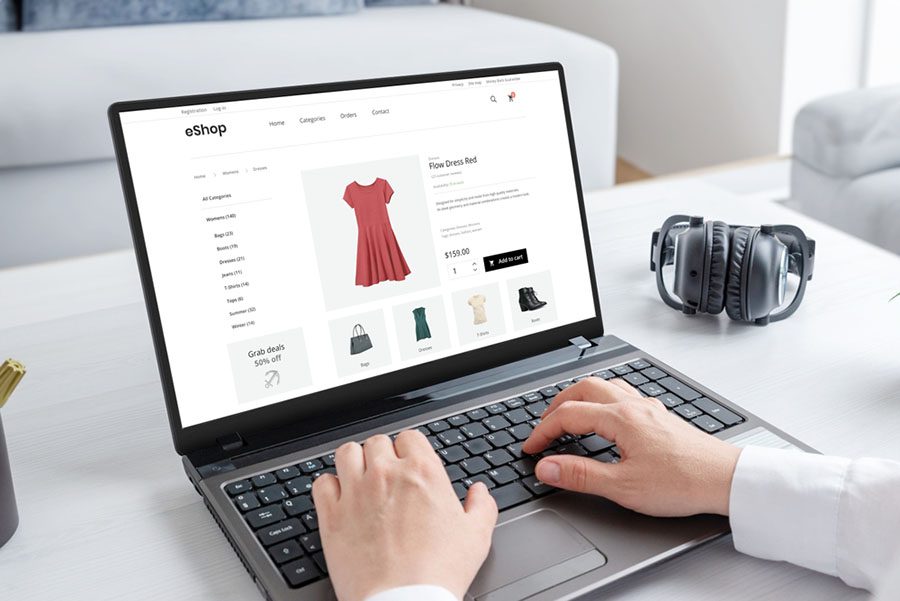
A physical merch store
As an alternative to or in addition to an online merch store, you can also have a physical location where you will sell your products. If you have a large fan base, you can open a physical store where you will specifically sell your products.
If you don’t have the facilities and resources to do that, you can always offer your products in retail stores. You must choose the correct time to add your products to store shelves. However, it is not recommended to rely on retail store sales alone because it might be hard for the target audience to find them.
9. Advertising the business
Effectively advertising your merch store is a crucial step. You can use both paid and free advertising strategies. For merch stores is essential to use a mix of digital marketing channels and:
- Utilize social media for advertising
- Leverage email marketing
- Implement search engine optimizations
- Run paid advertising campaigns
- Collaborate with other creators, businesses, and similar entities
You should constantly monitor and analyze the performance of your advertising campaigns. To maximize your return on investment, you should adjust your strategies and see what’s working and what’s not.
10. Selling, updating inventory, and making deals
Running a merch store includes creating product listings with high-quality images, descriptions, and prices. It is vital to have an effective inventory management system that will help you track stock levels and be notified when you need restocking.
To stand out, your merch store should keep up with the latest industry trends and offer competitive pricing. To potentially increase sales, you should offer seasonal sales, bundles, discounts for bulk purchases and implement other pricing strategies.
Who Should Set Up a Merch Store and Why?
Merch stores can be beneficial for both individuals and organizations. However, the process of how to set up a merch store is only for creative individuals and organizations with the time and resources to successfully build, manage, and grow an online business.
Typically, merch stores are especially recommended for people and organizations with specific backgrounds, such as:
- Content creators
- Influencers
- Musicians and bands
- Artists
- Businesses, including start-ups
- Sports teams
In other words, setting up a merch store is a practice for individuals and organizations who have followers or a certain fan base that will love to show their support by purchasing from them.
As for the reasons why merch stores are a huge hit in the past few years, the list is long and includes but is not limited to:
- Generating revenue stream
- Engaging target audience and fan base
- Market expansion as customers become a walking advertisement
- Promoting the brand and its values
- Building customer relationships

Conclusion
Merch stores offer a variety of advantages if they’re approached with careful planning and strategic execution. The steps on how to set up a merch store include defining a buyer persona, finding a brand voice, creating a business plan, choosing a product line, designing the merch, finding suppliers, developing a strong brand, and effectively managing inventory. If you follow the steps and are dedicated to the process, we are sure your merch process will thrive. And remember, if you want high-quality screen printed clothing, you can contact us by email, phone, request a phone call online or pay us a visit.

Robert Fisher is the founder and CEO of Thrive Screen Printing and brings extensive experience in the screen printing and fulfillment industry.

